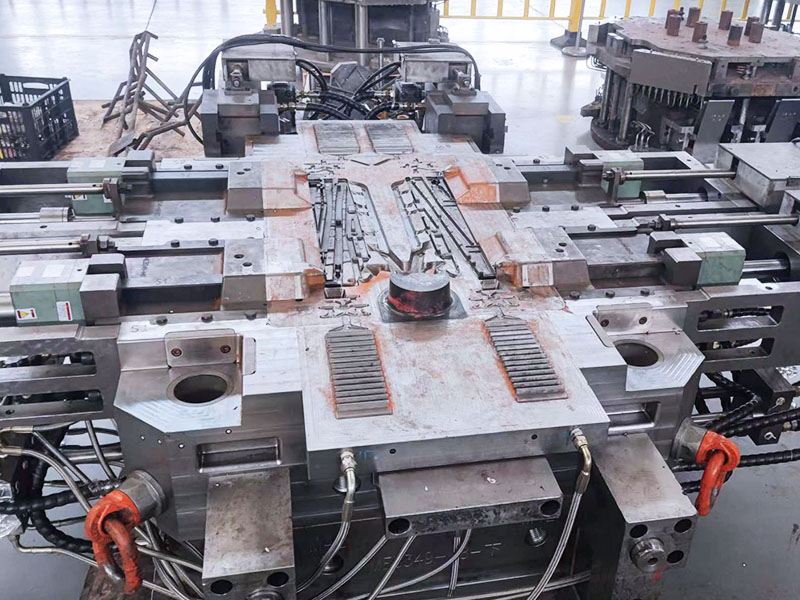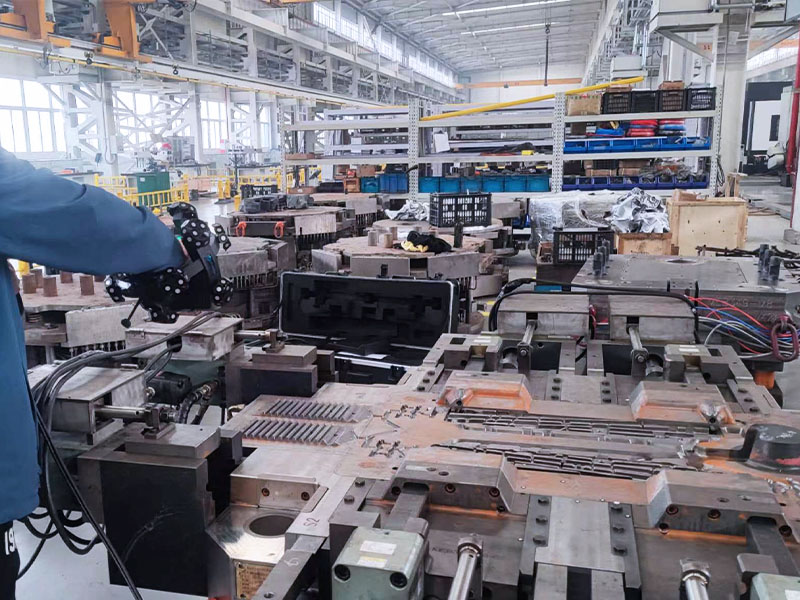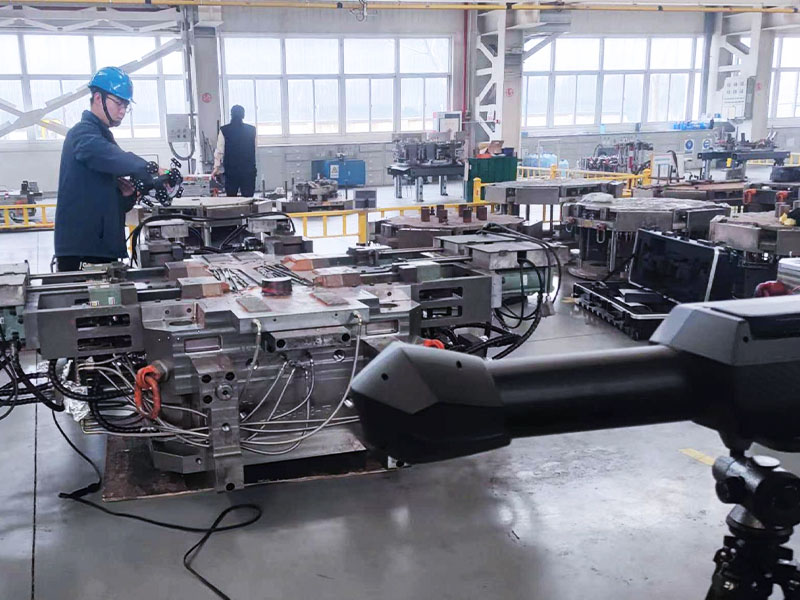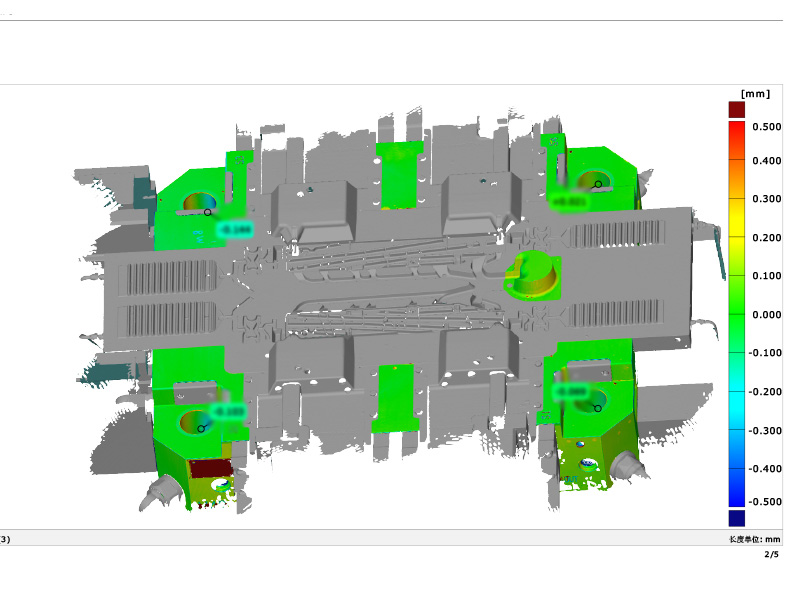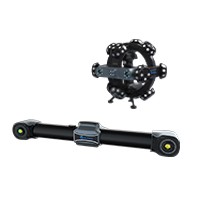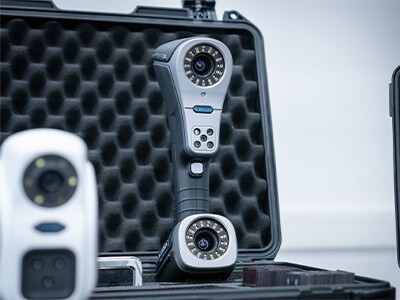Inspection of Automotive Aluminum Casting Mold with TrackScan-P 3D Scanner
Automotive casting molds are essential components for producing various parts of automobiles, such as engine blocks, cylinder heads, pistons, and gears.
The quality of the molds directly affects the quality of the final products, as well as the performance, safety, and durability of the automobiles.
However, making high-quality automotive casting molds is not an easy task. The molds are often large, complex, and have intricate details and features.
They also need to withstand harsh conditions, such as high temperature, pressure, and corrosion, during the casting process. Therefore, the molds need to meet high standards of accuracy, precision, and reliability.
Any defects can compromise the quality of the molds and the products, and lead to increased manufacturing costs, waste, and rework.
In this blog, we will explore the benefits and applications of 3D scanning and inspection, focusing on Scantech’s optical 3D measurement system TrackScan-P for the inspection of automotive casting molds.
Automotive Part Manufacturer
The customer is a large automotive parts manufacturer who produces automotive wheels, chassis, powertrain, car body parts, and molds. It is a key player and a global leader in the automotive parts production and manufacturing industry.
Inspect a Mold for Aluminum Casting
The customer needed to inspect a mold that was used to produce automotive aluminum castings by measuring its geometric dimensions, features, surfaces.
They aimed to evaluate whether the mold met the requirements of the drawings, to make timely adjustments and repairs.
Pain Points of Traditional Measurement Methods
Previously, they applied dye to the upper die and assembled the upper and lower dies to check for any dye changes, which indicated the presence of any issues with the mold.
This method was inefficient and difficult to detect small defects in the mold. It also increased the on-site handling and transportation of the dies and increased potential risks of damage.
Moreover, this method was not able to capture the full geometry and surface details of the molds, including the position of guide rods. They wanted to find a more efficient, accurate, and safe method to inspect mold.
Optical 3D Measurement System: New Solution for Inspection
This is where 3D scanning and inspecting technology comes in. We recommended our TrackScan-P portable 3D laser scanner to our customer, which quickly and accurately obtained the 3D data of the mold.
The 3D scanner measured the mold in a non-contact and non-destructive way, without the need to apply any dye or powder.
By comparing it with the 3D model, the engineer analyzed the position of guide rods on the fixed die and the position and diameters of cylinders on the moveable die.
With intuitive color maps generated by T-Viewer 3D software, they also clearly identified the actual conditions of the mold, including size deviations, surface defects, etc.
Besides that, using the 3D data captured, the engineer virtually simulated the assembly state of two upper and lower dies for further analysis.
Benefits of 3D Scanning and Inspection Solutions
Impressive Precision
Thanks to its accuracy of up to 0.025 mm, TrackScan-P allowed for the capture of intricate details on the mold surface. This level of accuracy was crucial in ensuring that the manufactured automotive parts meet strict quality standards.
High efficiency
It also streamlined the process by capturing comprehensive data quickly and without the need for physical contact, sticking targets or applying powder.
It reduced the on-site moving of molds and the risks of damage, and saving time and manpower. This efficiency led to significant time savings in the inspection, contributing to overall production efficiency.
Comprehensive Analysis
The point cloud generated through 3D scanning were analyzed in detail, allowing manufacturers to identify deviations from the intended design more easily.
This comprehensive analysis helped in detecting defects or irregularities on the mold surface that may affect the quality of the produced automotive parts.
Faster Iterative Processes
3D scanning allowed for quick adjustments based on real-time feedback. Manufacturers identified and addressed issues promptly, reducing the time required for design modifications and enhancing the overall agility of the production process.
Conclusion
The TrackScan-P 3D scanned the mold in a fast, accurate, and safe way, and provided comprehensive and intuitive data and analysis.
The TrackScan-P is a professional 3D scanner that can help large automotive parts manufacturers improve the quality and efficiency of manufacturing molds.
Optimizing mold design enables us to produce high-quality, high-precision, and smooth-surface castings.
The optical 3D measurement system can also help customers to optimize the design and adjustment of the mold, and improve its performance and lifespan of the mold.

